Daffodils and Cherry Blossom 2015
New life beside dried old twigs
Dried flowers from last year
Not yet born
Spring warm weather
With moisture from rain
New life sparkles
Taking roots and branches
Ready to create next generation
Ing-On Vibulbhan-Watts, Wednesday, April 15, 2015
Peek-a Boo, I’ve Found You
Peek-a Boo Daffodils
See you now!!!
Hiding so well
For the whole year
Now I’ve caught you
Looking so fresh and lovely
The first one to be found
And first to hide
Next spring
We meet again
Peak-a Boo I’ve found you
Oh, my lovely daffodils
So glad
Peek-a Boo!!!!
Peek-a Boo!!!!
Ing-On Vibulbhan-Watts, Wednesday, April 15, 2015
Cherry Blossom 2015
The winter of 2014 was colder than other years and the cold remained until now. This caused the cherry blossoms in Branch Brook Park to bloom later than usual. John and I drove passed the park and checked the cherry blossom trees last week. It looked to me that the cherry blossom trees were still asleep. There were no flowers on the branches. But in other places such as Japan, Korea, China and even in Washington DC the cherry blossoms are in full bloom. So I decided to take trips to those places by opening my computer and letting digital technology transport me to faraway lands. Thanks to all the websites that posted beautiful pictures of cherry blossoms. The following is a summary of my trip viewing the Cherry Blossom Festival Events of the year 2015 on the internet.
The Most Beautiful Cherry Blossoms Around The World
By Lina D.
https://www.boredpanda.com/most-beautiful-cherry-blossoms-around-the-world/
One of the best known symbols of spring in Japan are the magnificent pink Japanese cherry trees, also called sakura. Starting in mid-March, the Internet is flooded with amazing pictures of all varieties of pink, blooming in parks and streets of different cities of Japan. The earliest city to blossom is Tokyo – this year its sakura trees are expected to be in full bloom by the end of March. Depending on a city, Japanese cherry trees may bloom even through May.
As the official Japanese school year starts in April, the first day back at school or work after the holidays usually coincides with the blooming of the sakuras. You will always see many locals picnicking under the cherries every season – the tradition is called hanami, and dates back to the 8th century!
Because the cherries blossom in bunches of flowers, they are symbolically associated with clouds, and stand for ephemeral nature of life in Japanese culture, that’s highly influenced by Buddhism. Sakura’s are often featured in Japanese art, movies, anime and manga. Curiously, the delicate cherry trees were once even used as part of the propaganda, in order to inspire the “Japanese spirit” before the wake of the World War II.
Even though sakura is the unofficial national flower of Japan, today they have spread to many other countries as well, mostly due to the Japanese diaspora. The blooming of the sakuras is definitely one of the most beautiful sights every spring, wherever you find them!
 Image credits: Adas Meliauskas
Image credits: Adas Meliauskas
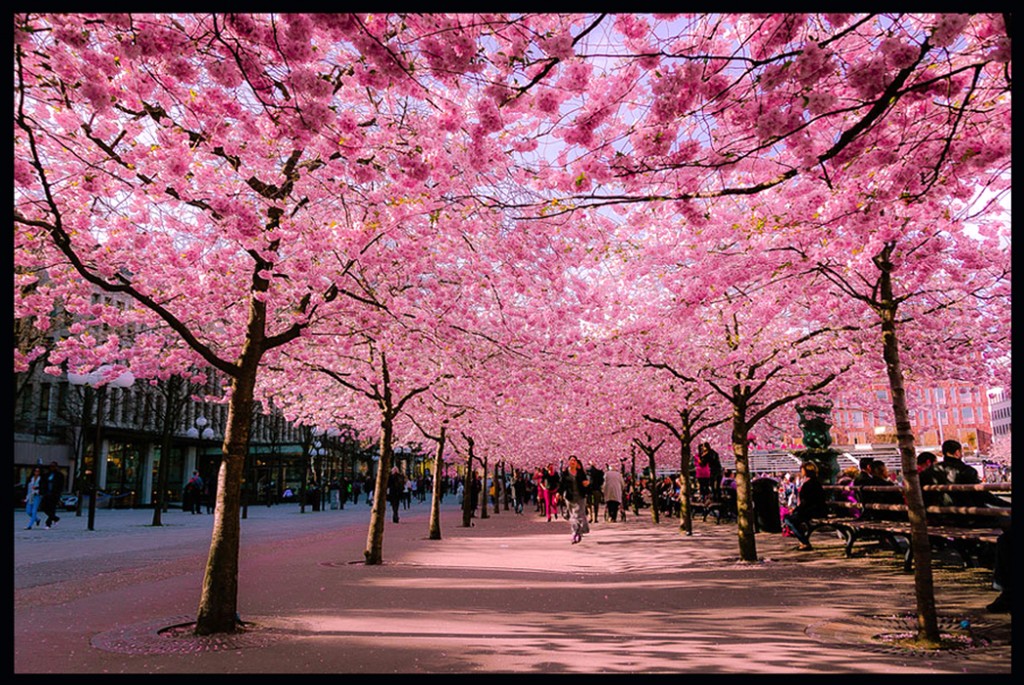 Image credits: Hector Melo A.
Image credits: Hector Melo A.
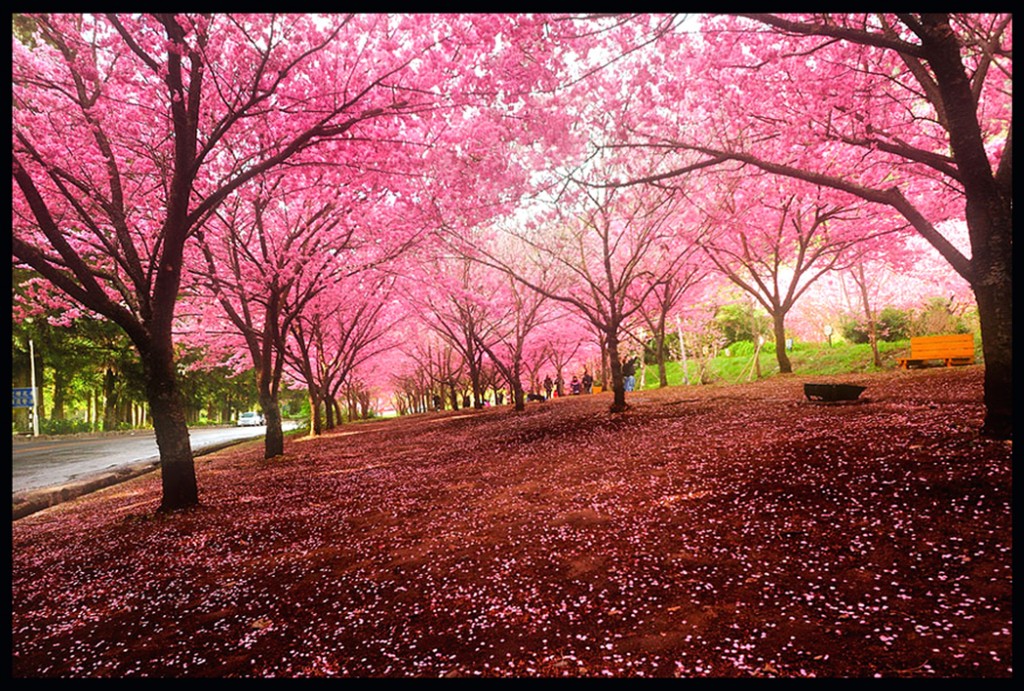 Image credits: Brian Hsu
Image credits: Brian Hsu
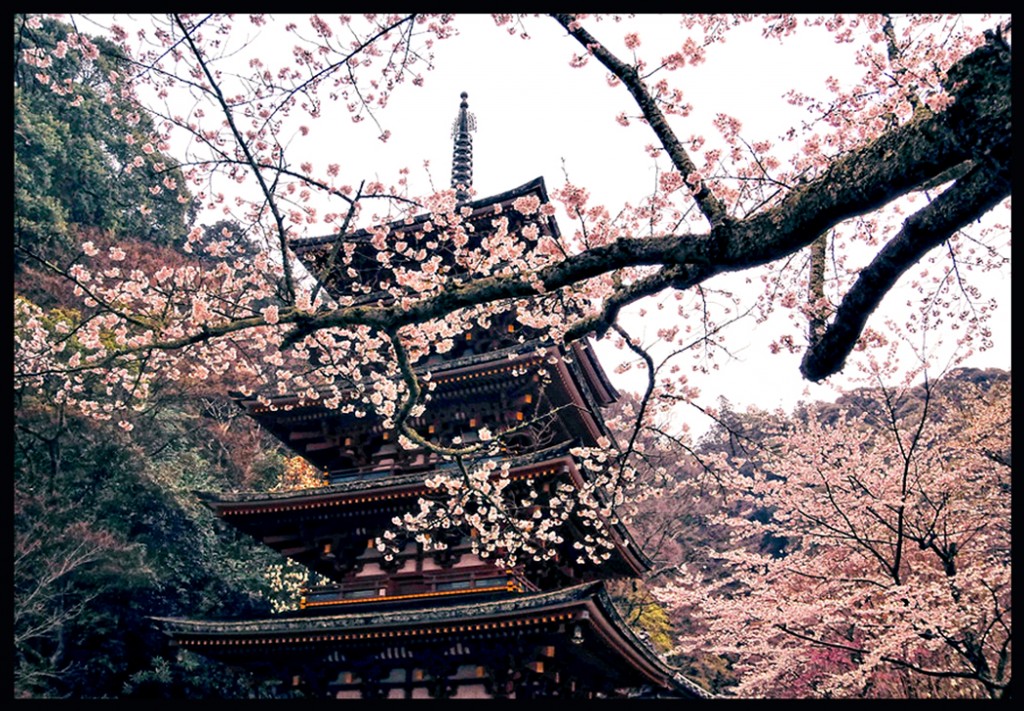 Image credits: y2 – hiro
Image credits: y2 – hiro
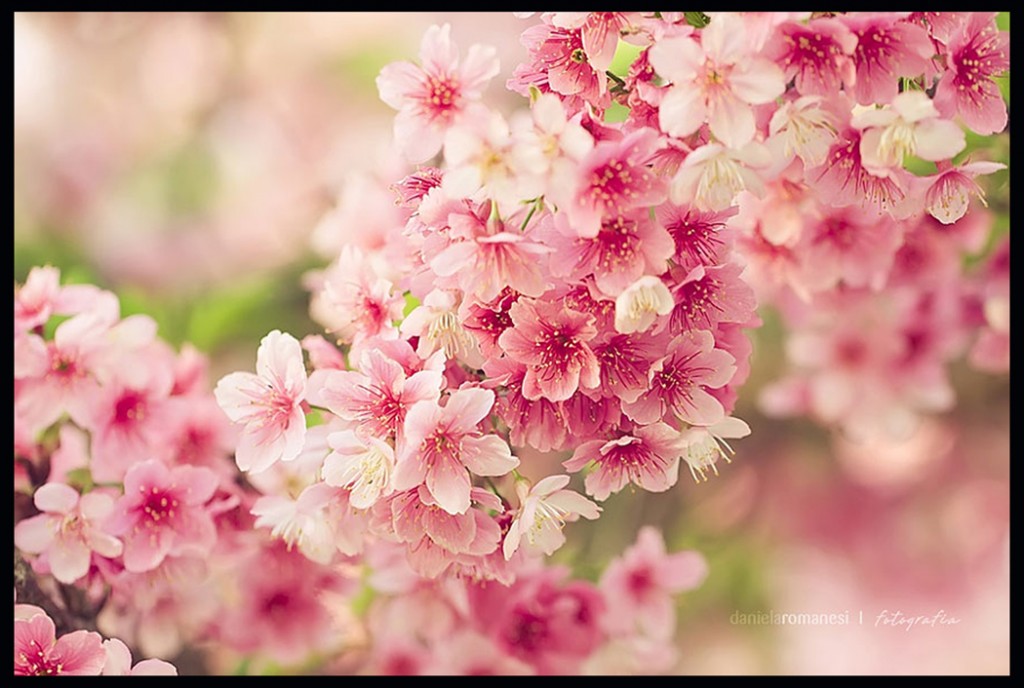 Image credits: Dani Romanesi
Image credits: Dani Romanesi
 Image credits: Ida Shum
Image credits: Ida Shum
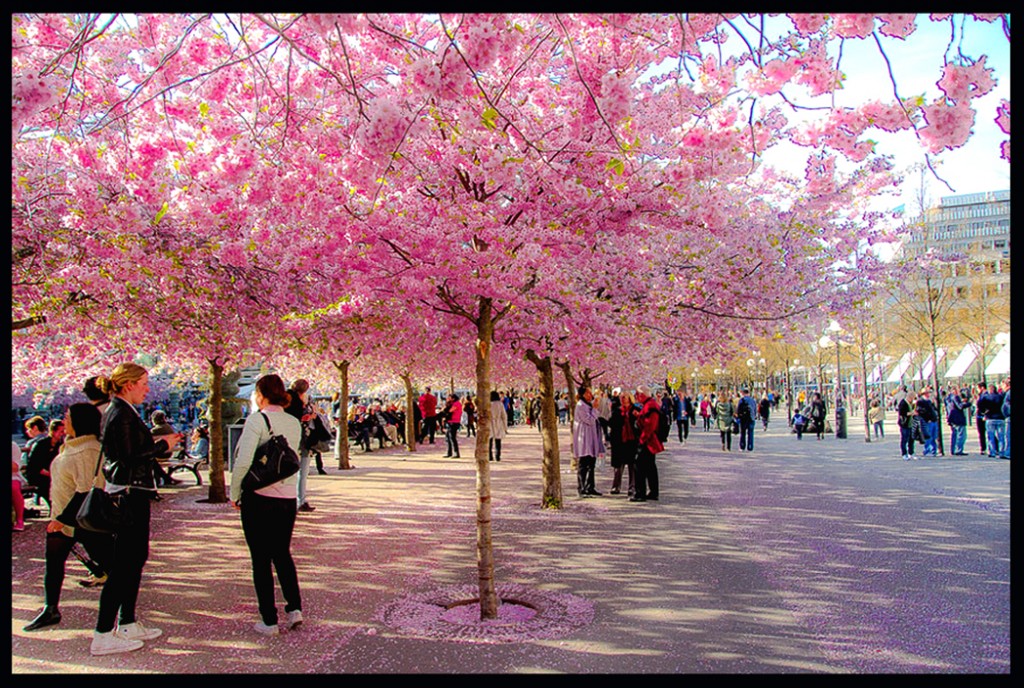 Image credits: Hector Melo A.
Image credits: Hector Melo A.
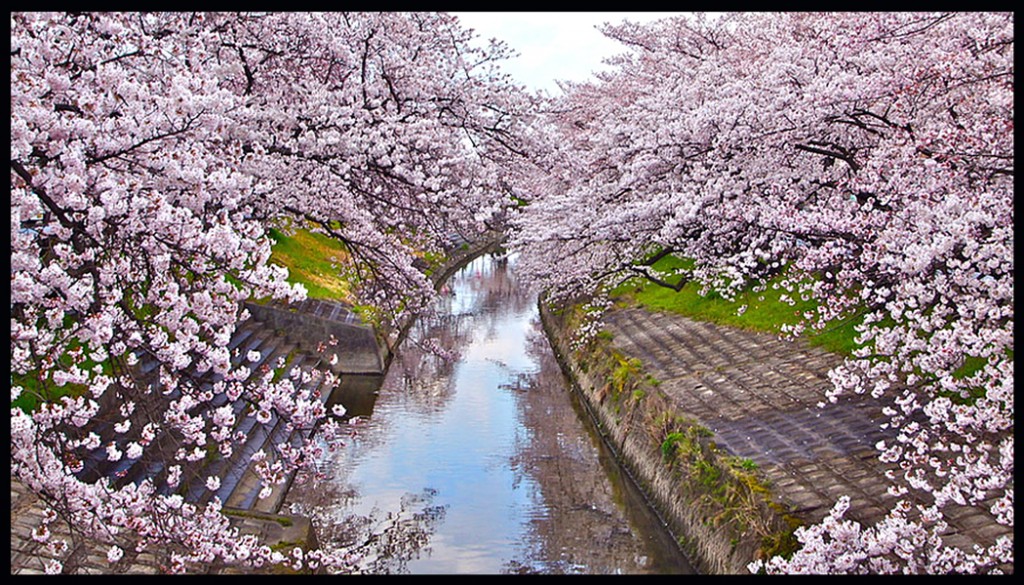 Image credits: Inoue Keiichi
Image credits: Inoue Keiichi
 Image credits: Shawn Marshall
Image credits: Shawn Marshall
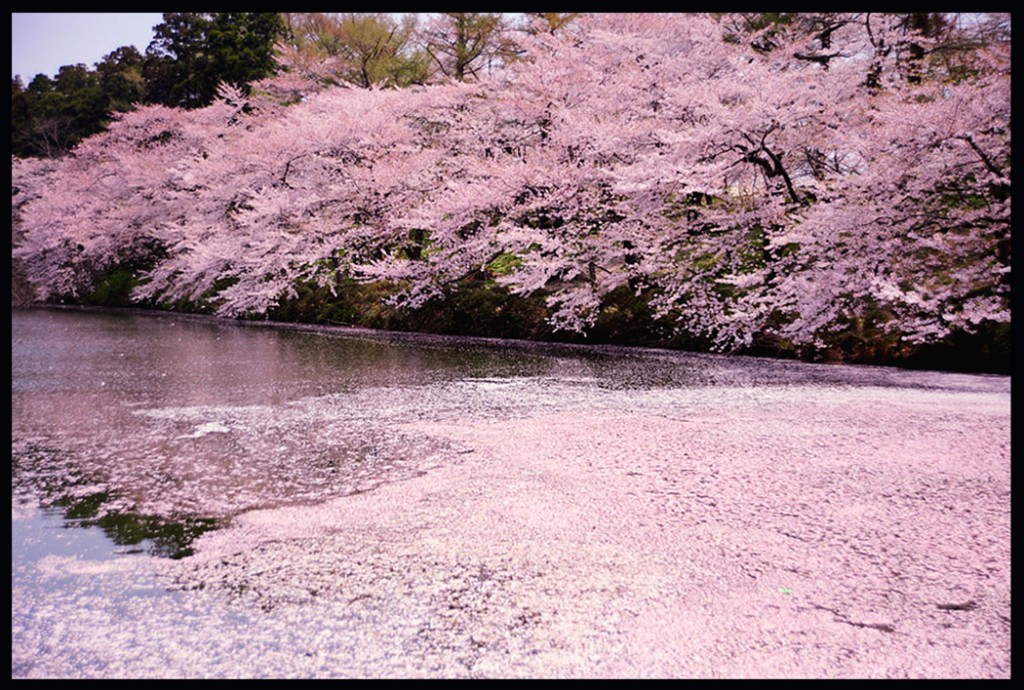 Image credits: Saru Kachim
Image credits: Saru Kachim
 Image credits: Hiroki Morita
Image credits: Hiroki Morita
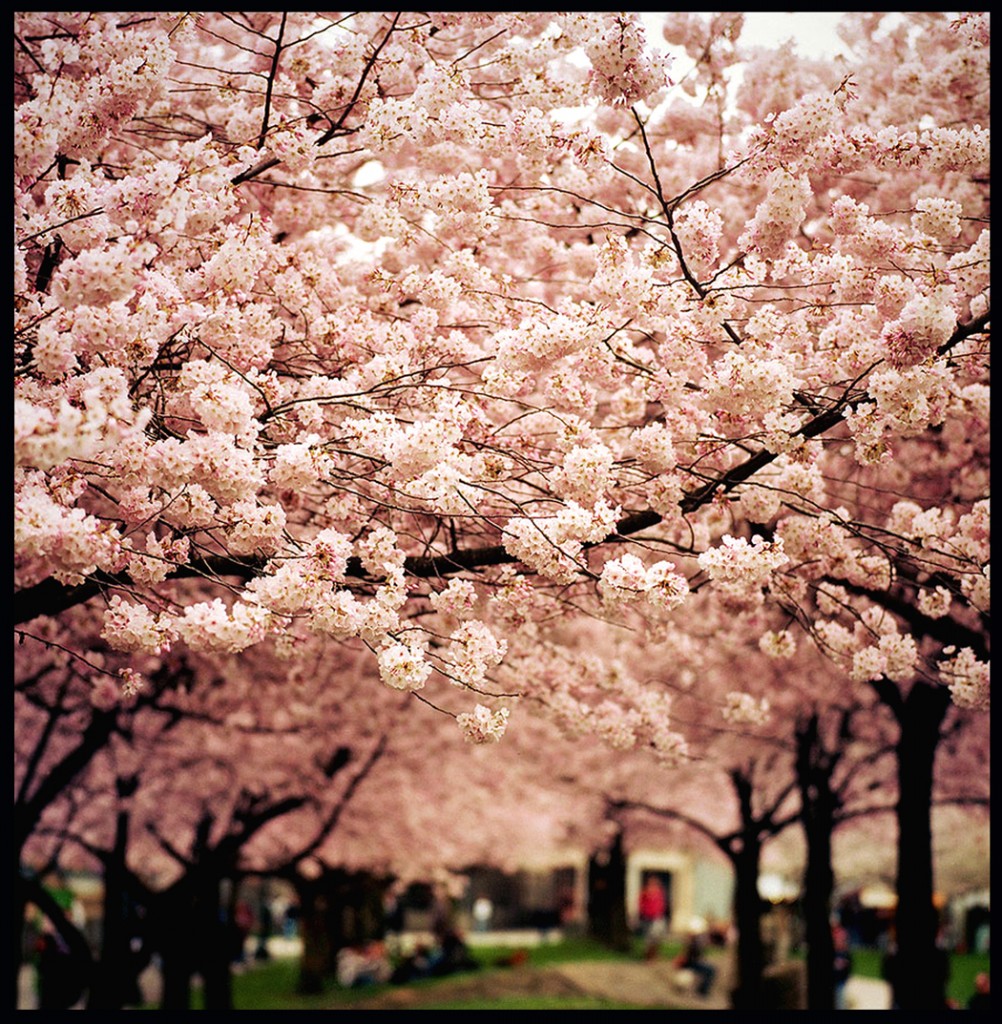 Image credits: Danielle Hughson
Image credits: Danielle Hughson
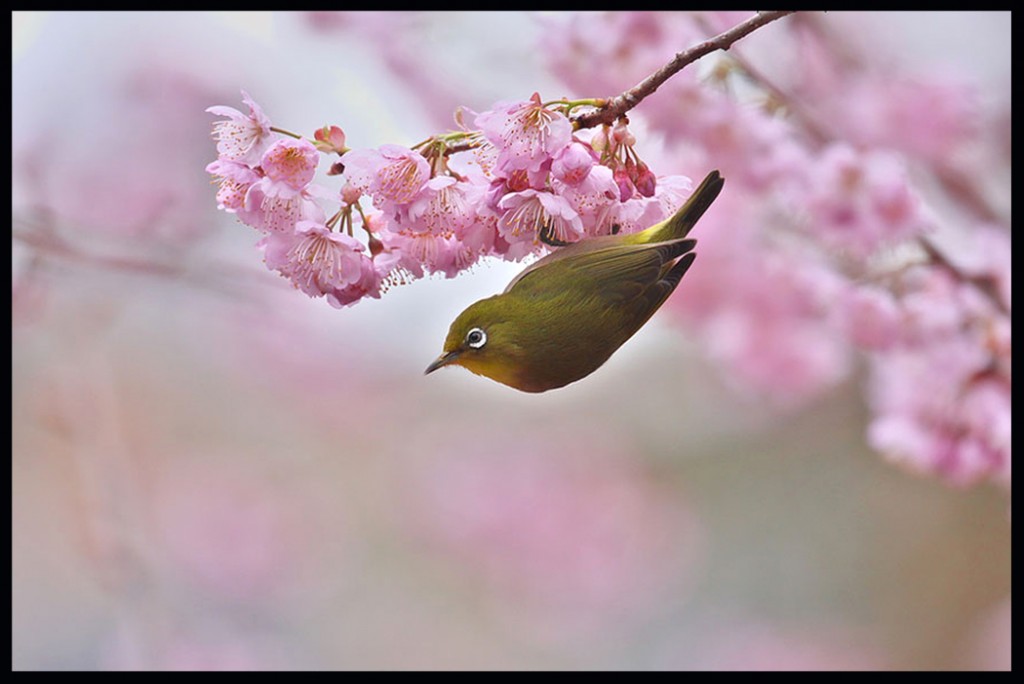 Image credits: Kaz Watanabe
Image credits: Kaz Watanabe
Cherry blossom
From Wikipedia, the free encyclopedia
“Cherry Blossom” and “Sakura” redirect here. For other uses, see Cherry Blossom (disambiguation) and Sakura (disambiguation).
 Cherry blossoms at the Tokyo Imperial Palace
Cherry blossoms at the Tokyo Imperial Palace
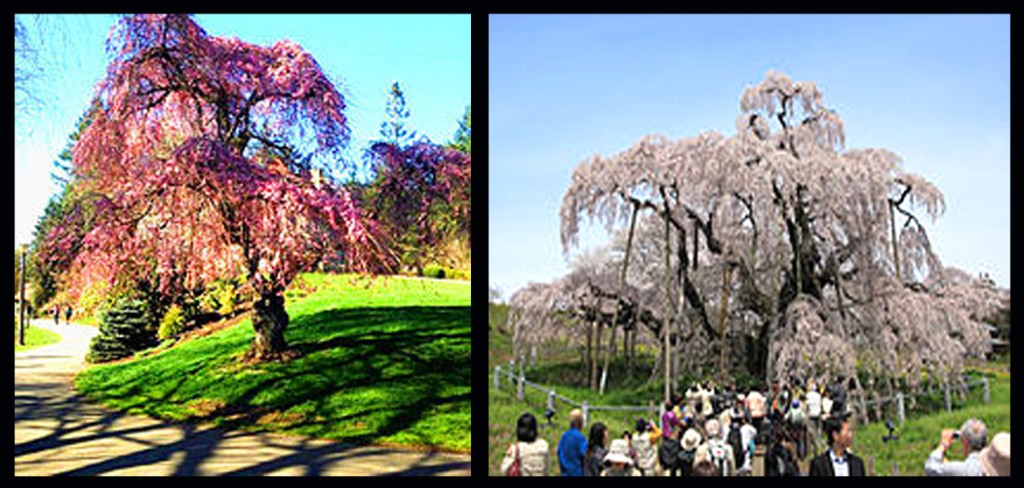 Left: Cherry blossom tree in bloom at the Pittock Mansion in Oregon.
Left: Cherry blossom tree in bloom at the Pittock Mansion in Oregon.
Right:The Miharu Takizakura in Fukushima
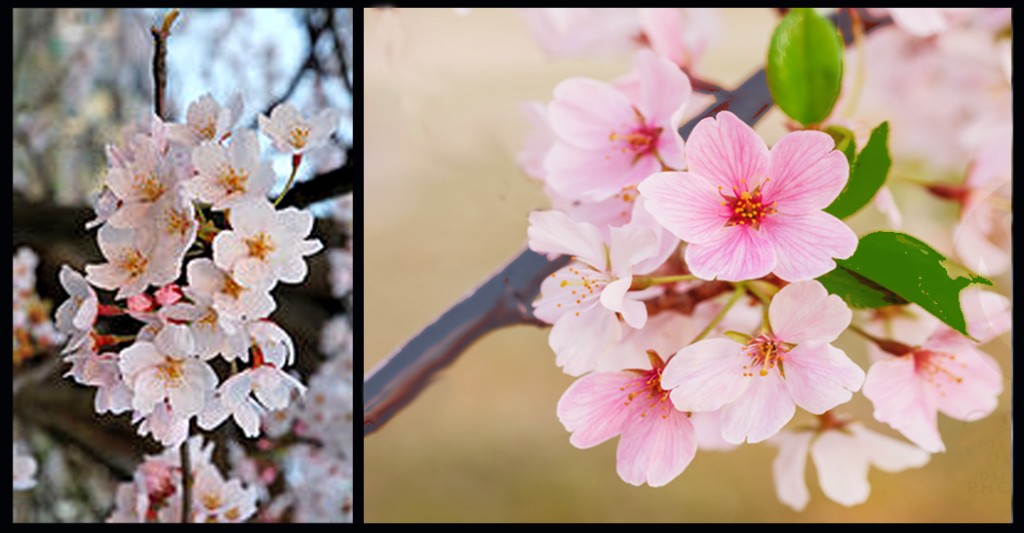 Left:Cherry blossoms in Fukushima
Left:Cherry blossoms in Fukushima
 A cherry blossom is the flower of any of several trees of genus Prunus, particularly the Japanese Cherry, Prunus serrulata, which is called sakura after the Japanese (? or ?; ???).[1][2][3]
A cherry blossom is the flower of any of several trees of genus Prunus, particularly the Japanese Cherry, Prunus serrulata, which is called sakura after the Japanese (? or ?; ???).[1][2][3]
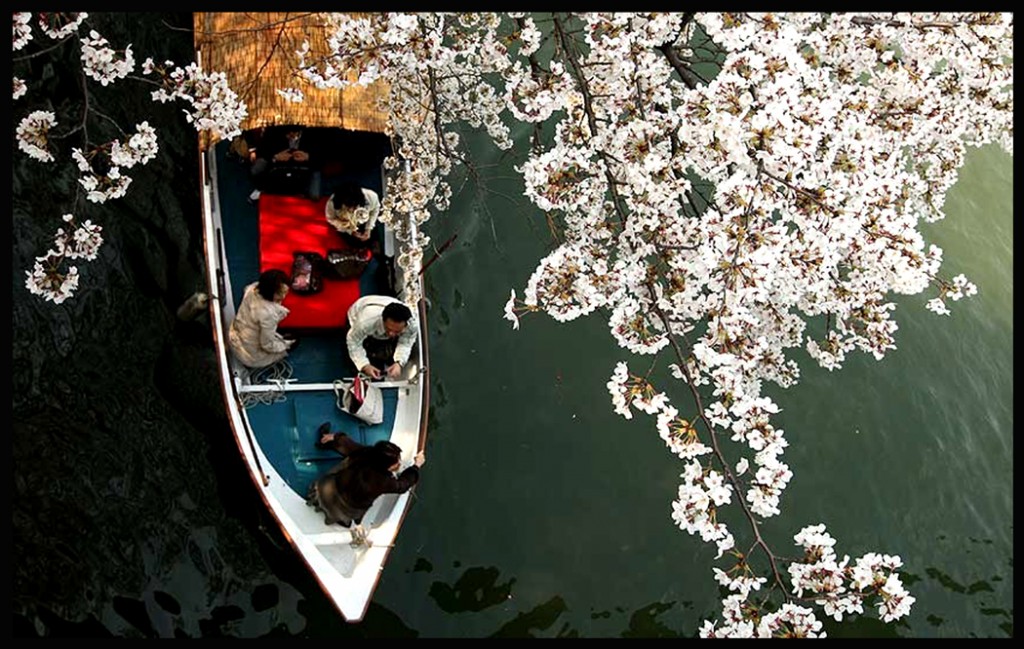 The city is Japan’s third largest. Sakuranomiya is the riverside park with walking trails through the blossom. Image credits: www.telegraph.co.uk
The city is Japan’s third largest. Sakuranomiya is the riverside park with walking trails through the blossom. Image credits: www.telegraph.co.uk
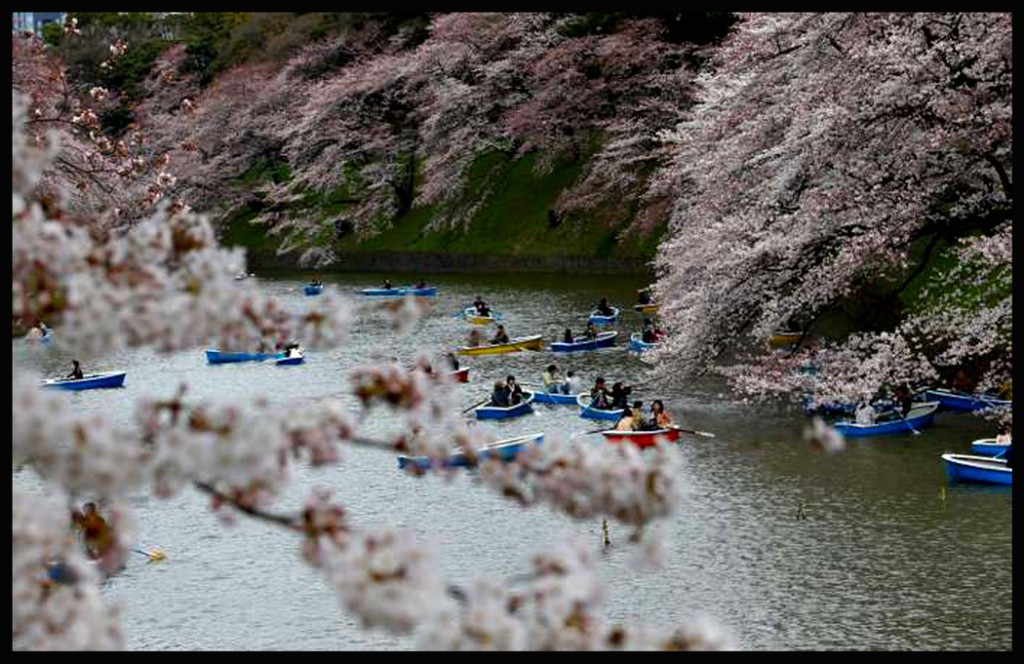 Cherry blossom is speculated to be native to the Himalayas.[4] Currently it is widely distributed, especially in the temperate zone of the Northern Hemisphere including Europe, West Siberia, South Korea, China, Japan, and the United States.[5][6]
Cherry blossom is speculated to be native to the Himalayas.[4] Currently it is widely distributed, especially in the temperate zone of the Northern Hemisphere including Europe, West Siberia, South Korea, China, Japan, and the United States.[5][6]
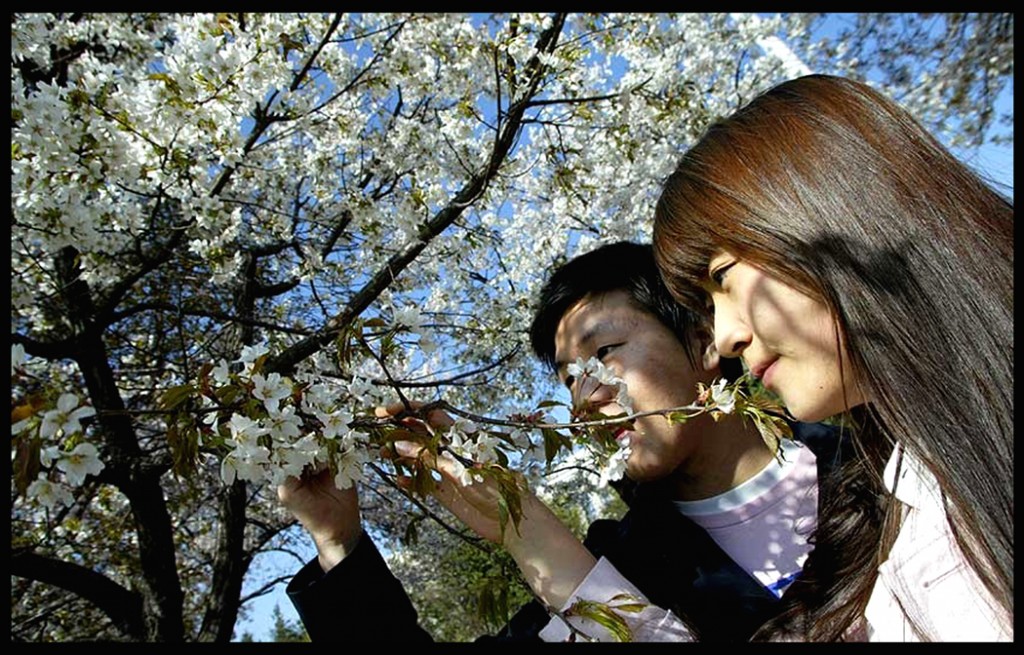 Seoul, South Korea: In Seoul, the Youldo blossom festival brings walkers and their cameras to parkland near the city’s national assembly building. Image credits: www.telegraph.co.uk
Seoul, South Korea: In Seoul, the Youldo blossom festival brings walkers and their cameras to parkland near the city’s national assembly building. Image credits: www.telegraph.co.uk
 Many of the varieties that have been cultivated for ornamental use do not produce fruit. Edible cherries generally come from cultivars of the related species Prunus avium and Prunus cerasus. Cherry blossom are also closely related to other Prunus trees such as the almond, peach, plum and apricot and more distantly to apples, pears and roses.
Many of the varieties that have been cultivated for ornamental use do not produce fruit. Edible cherries generally come from cultivars of the related species Prunus avium and Prunus cerasus. Cherry blossom are also closely related to other Prunus trees such as the almond, peach, plum and apricot and more distantly to apples, pears and roses.
 The practice of picnicking under a blossom tree is known as “hanami” and is thought to have started in the 8th century. Image credits: www.telegraph.co.uk
The practice of picnicking under a blossom tree is known as “hanami” and is thought to have started in the 8th century. Image credits: www.telegraph.co.uk
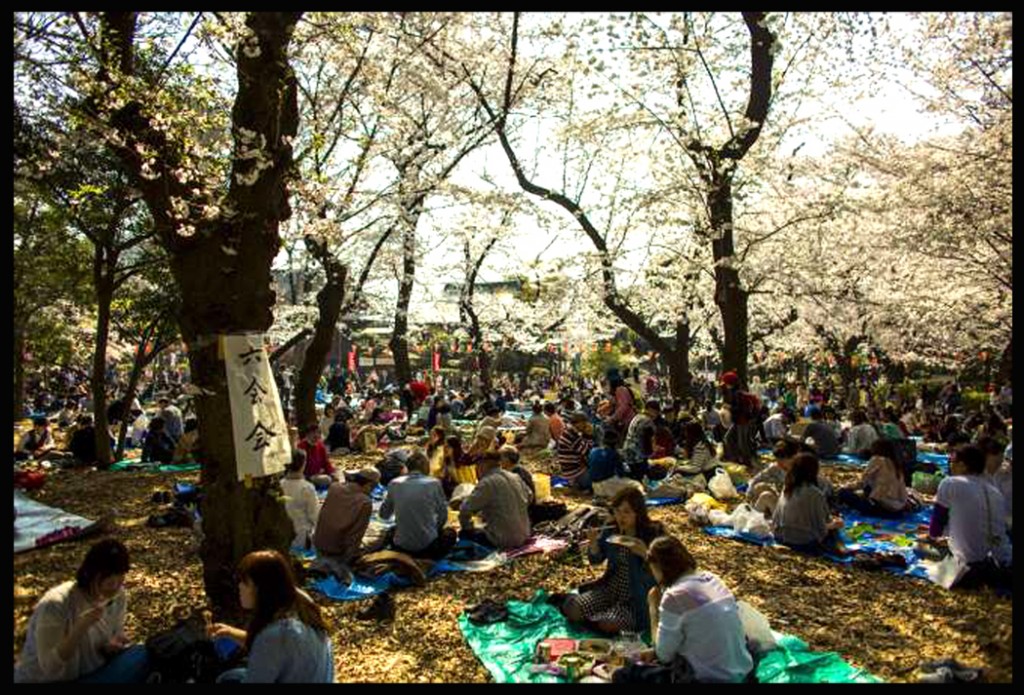 “Hanami” is the centuries-old practice of picnicking under a blooming sakura or ume tree. The custom is said to have started during the Nara Period (710–794) when it was ume blossoms that people admired in the beginning. But by the Heian Period (794–1185), cherry blossoms came to attract more attention and hanami was synonymous with sakura.[7] From then on, in both waka and haiku, “flowers” (? hana?) meant “cherry blossoms”.
“Hanami” is the centuries-old practice of picnicking under a blooming sakura or ume tree. The custom is said to have started during the Nara Period (710–794) when it was ume blossoms that people admired in the beginning. But by the Heian Period (794–1185), cherry blossoms came to attract more attention and hanami was synonymous with sakura.[7] From then on, in both waka and haiku, “flowers” (? hana?) meant “cherry blossoms”.
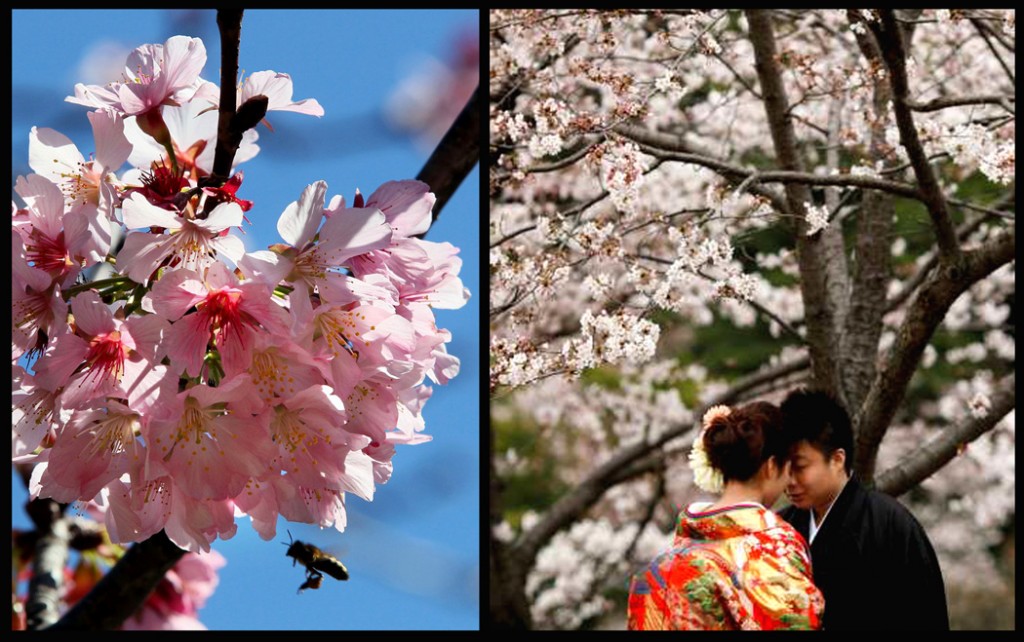 The custom was originally limited to the elite of the Imperial Court, but soon spread to samurai society and, by the Edo period, to the common people as well. Tokugawa Yoshimune planted areas of cherry blossom trees to encourage this. Under the sakura trees, people had lunch and drank sake in cheerful feasts.
The custom was originally limited to the elite of the Imperial Court, but soon spread to samurai society and, by the Edo period, to the common people as well. Tokugawa Yoshimune planted areas of cherry blossom trees to encourage this. Under the sakura trees, people had lunch and drank sake in cheerful feasts.
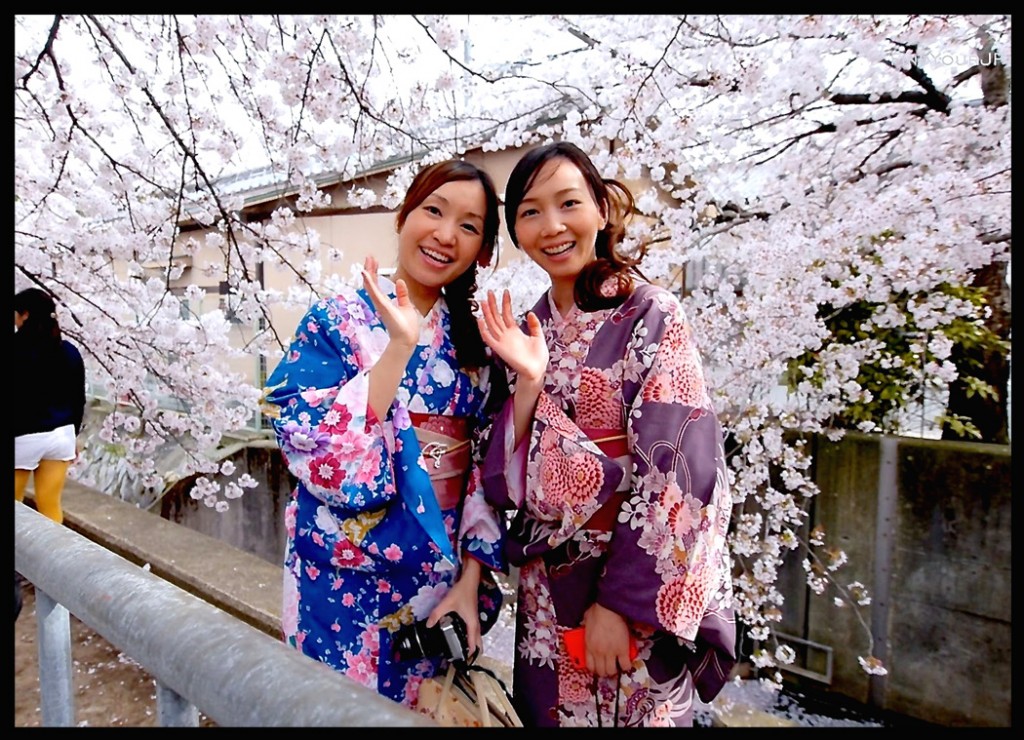
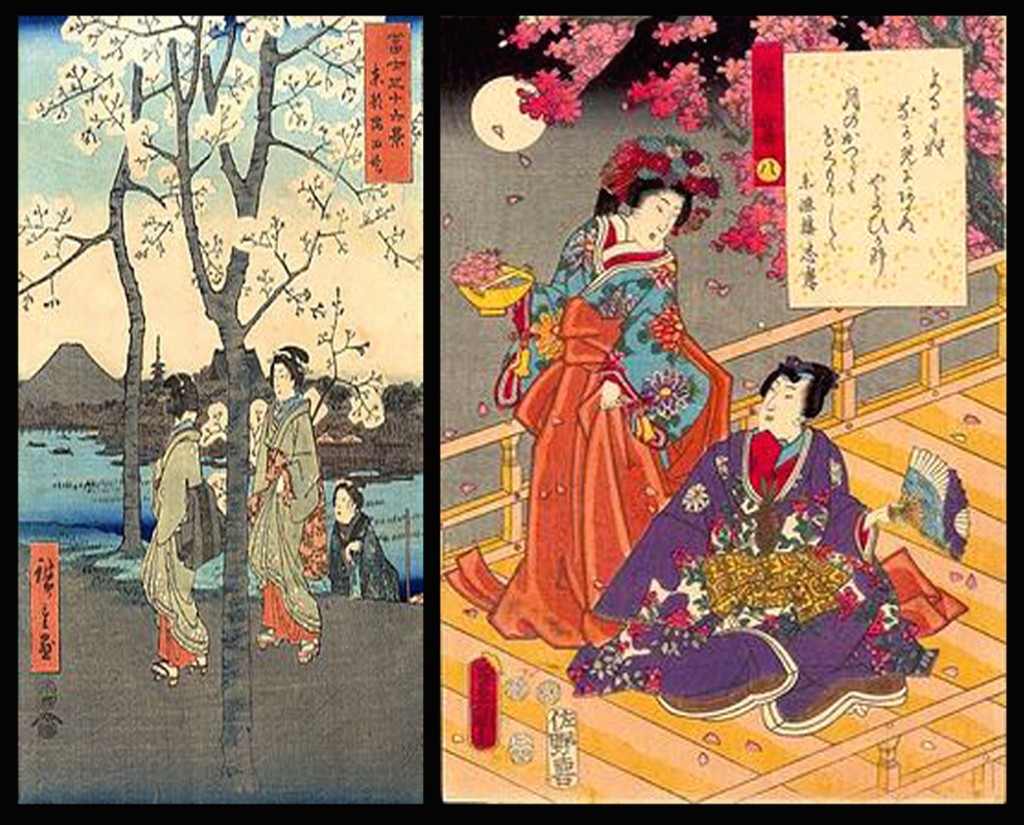 Left:Woodblock print of Mount Fuji and cherry blossom from 36 Views of Mount Fuji by Hiroshige.
Left:Woodblock print of Mount Fuji and cherry blossom from 36 Views of Mount Fuji by Hiroshige.
Every year the Japanese Meteorological Agency and the public track the sakura zensen (cherry blossom front) as it moves northward up the archipelago with the approach of warmer weather via nightly forecasts following the weather segment of news programs.
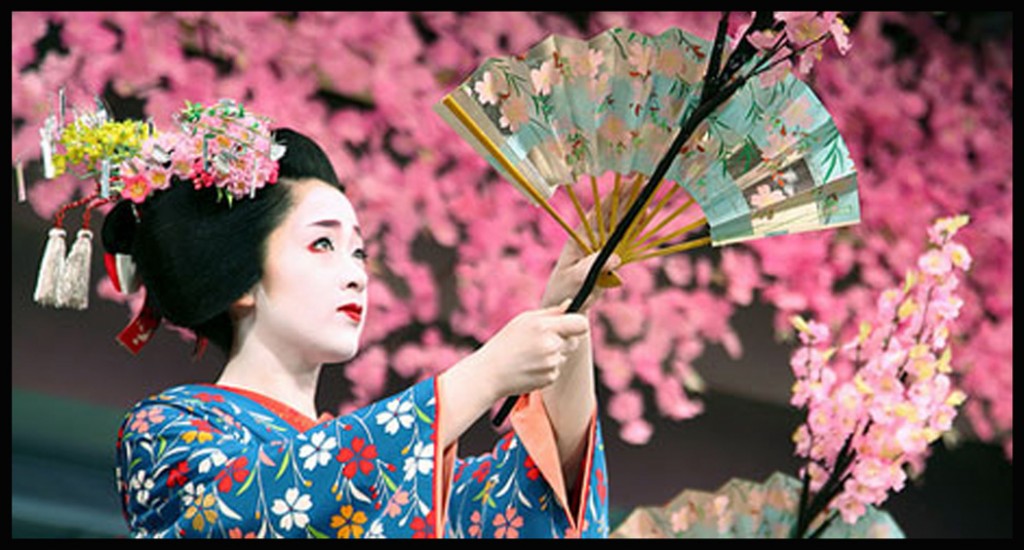 The blossoming begins in Okinawa in January and typically reaches Kyoto and Tokyo at the end of March or the beginning of April. It proceeds into areas at the higher altitudes and northward, arriving in Hokkaid? a few weeks later.
The blossoming begins in Okinawa in January and typically reaches Kyoto and Tokyo at the end of March or the beginning of April. It proceeds into areas at the higher altitudes and northward, arriving in Hokkaid? a few weeks later.
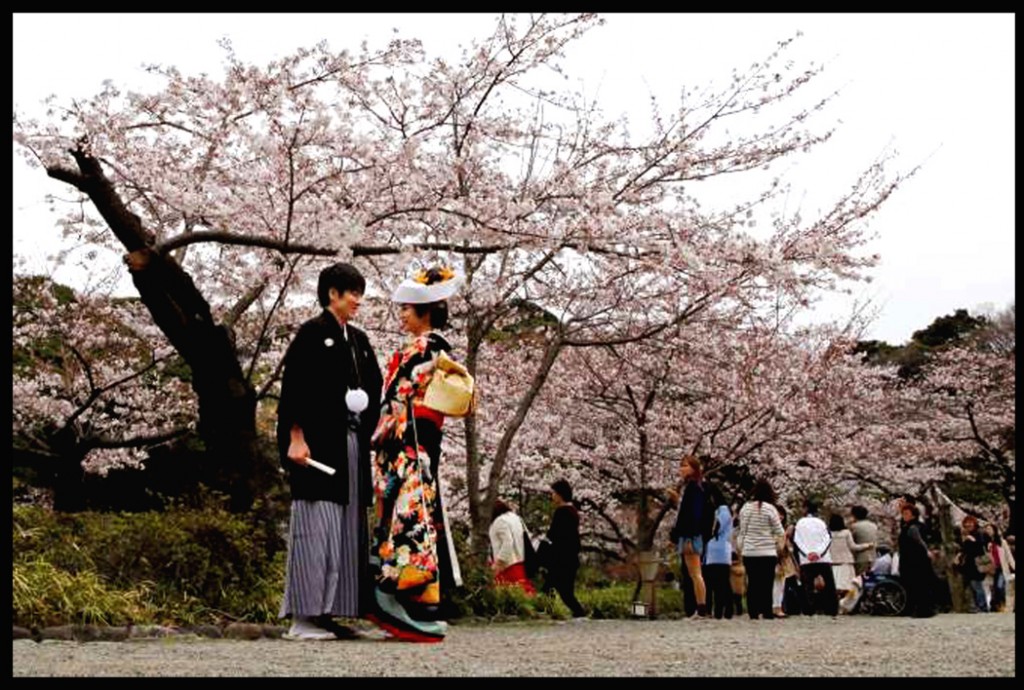 Japanese pay close attention to these forecasts and turn out in large numbers at parks, shrines, and temples with family and friends to hold flower-viewing parties. Hanami festivals celebrate the beauty of the cherry blossom and for many are a chance to relax and enjoy the beautiful view. The custom of hanami dates back many centuries in Japan. The eighth-century chronicle Nihon Shoki (????) records hanami festivals being held as early as the third century AD.
Japanese pay close attention to these forecasts and turn out in large numbers at parks, shrines, and temples with family and friends to hold flower-viewing parties. Hanami festivals celebrate the beauty of the cherry blossom and for many are a chance to relax and enjoy the beautiful view. The custom of hanami dates back many centuries in Japan. The eighth-century chronicle Nihon Shoki (????) records hanami festivals being held as early as the third century AD.
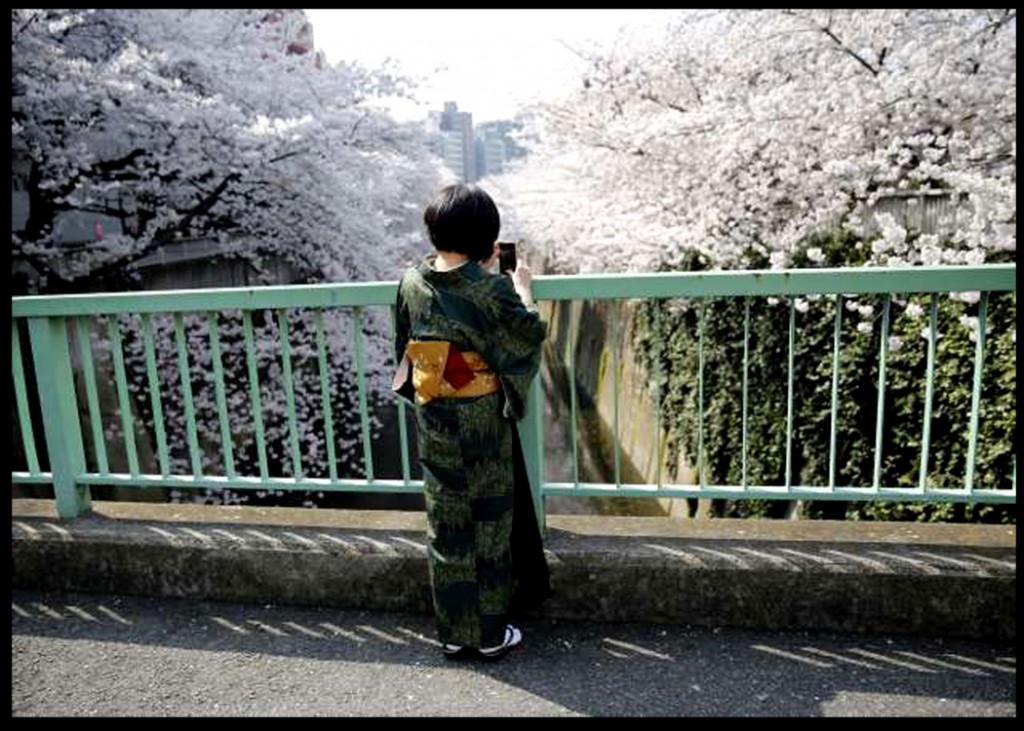 Most Japanese schools and public buildings have cherry blossom trees outside of them. Since the fiscal and school year both begin in April, in many parts of Honsh?, the first day of work or school coincides with the cherry blossom season.
Most Japanese schools and public buildings have cherry blossom trees outside of them. Since the fiscal and school year both begin in April, in many parts of Honsh?, the first day of work or school coincides with the cherry blossom season.
 The Japan Cherry Blossom Association developed a list of Japan’s Top 100 Cherry Blossom Spots[8] with at least one location in every prefecture.
The Japan Cherry Blossom Association developed a list of Japan’s Top 100 Cherry Blossom Spots[8] with at least one location in every prefecture.
Top Left: A 100 yen coin depicting Cherry Blossom
In Japan, cherry blossoms symbolize clouds due to their nature of blooming en masse, besides being an enduring metaphor for the ephemeral nature of life,[9] an aspect of Japanese cultural tradition that is often associated with Buddhist influence,[10] and which is embodied in the concept of mono no aware.[11] The association of the cherry blossom with mono no aware dates back to 18th-century scholar Motoori Norinaga.[11] The transience of the blossoms, the extreme beauty and quick death, has often been associated with mortality;[9] for this reason, cherry blossoms are richly symbolic, and have been utilized often in Japanese art, manga, anime, and film, as well as at musical performances for ambient effect. There is at least one popular folk song, originally meant for the shakuhachi (bamboo flute), titled “Sakura“, and several pop songs. The flower is also represented on all manner of consumer goods in Japan, including kimono, stationery, and dishware.
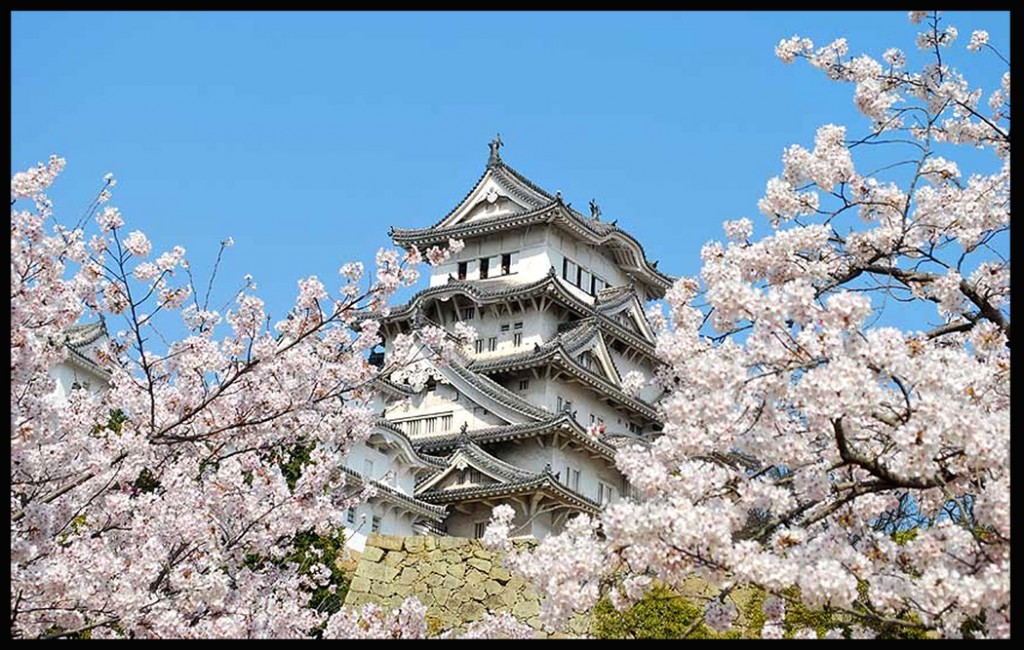 At Himeji Castle, Japan
At Himeji Castle, Japan
The Sakurakai or Cherry Blossom Society was the name chosen by young officers within the Imperial Japanese Army in September 1930 for their secret society established with the goal of reorganizing the state along totalitarian militaristic lines, via a military coup d’état if necessary.[12]
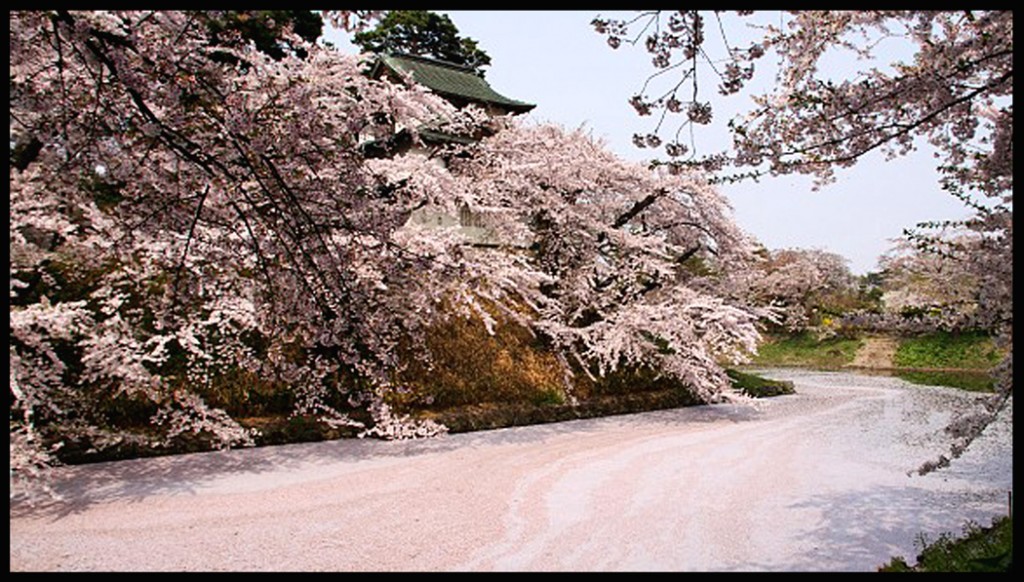 During World War II, the cherry blossom was used to motivate the Japanese people, to stoke nationalism and militarism among the populace.[13] Even prior to the war, they were used in propaganda to inspire “Japanese spirit,” as in the “Song of Young Japan,” exulting in “warriors” who were “ready like the myriad cherry blossoms to scatter.”[14]
During World War II, the cherry blossom was used to motivate the Japanese people, to stoke nationalism and militarism among the populace.[13] Even prior to the war, they were used in propaganda to inspire “Japanese spirit,” as in the “Song of Young Japan,” exulting in “warriors” who were “ready like the myriad cherry blossoms to scatter.”[14]
In 1932, Akiko Yosano‘s poetry urged Japanese soldiers to endure sufferings in China and compared the dead soldiers to cherry blossoms.[15] Arguments that the plans for the Battle of Leyte Gulf, involving all Japanese ships, would expose Japan to serious danger if they failed, were countered with the plea that the Navy be permitted to “bloom as flowers of death.”[16]
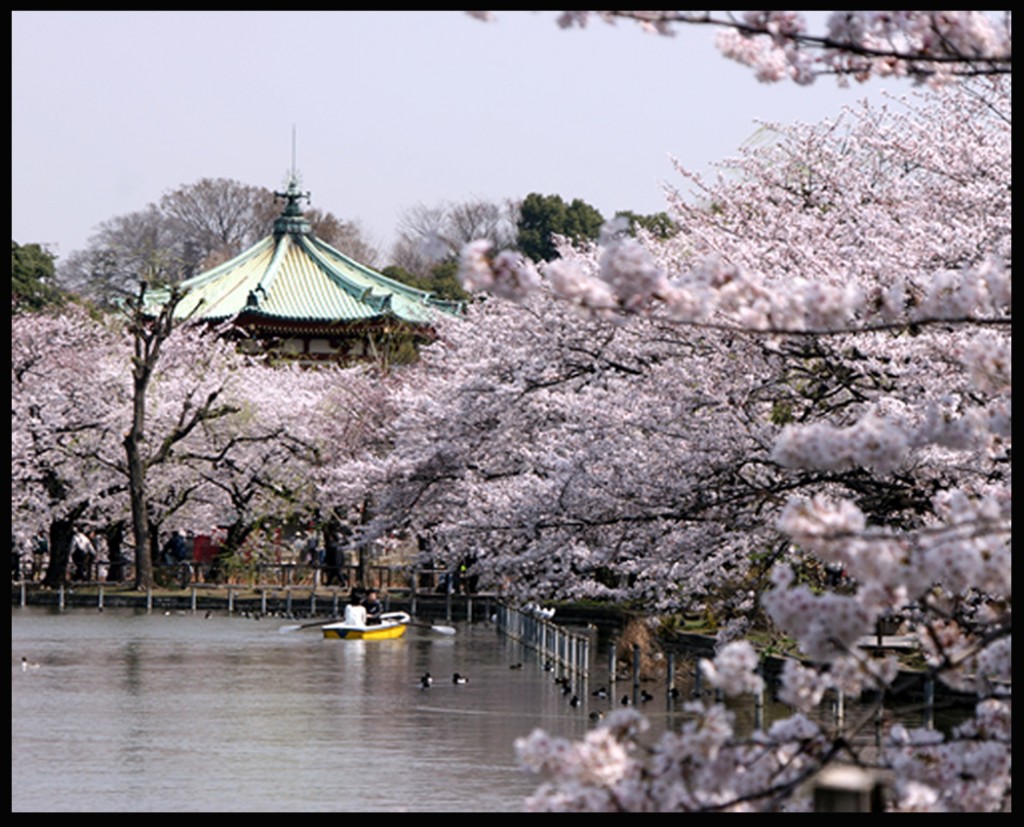 The last message of the forces on Peleliu was “Sakura, Sakura” — cherry blossoms.[17] Japanese pilots would paint them on the sides of their planes before embarking on a suicide mission, or even take branches of the trees with them on their missions.[13] A cherry blossom painted on the side of the bomber symbolized the intensity and ephemerality of life;[18] in this way, the aesthetic association was altered such that falling cherry petals came to represent the sacrifice of youth in suicide missions to honor the emperor.[13][19] The first kamikaze unit had a subunit called Yamazakura or wild cherry blossom.[19] The government even encouraged the people to believe that the souls of downed warriors were reincarnated in the blossoms.[13]
The last message of the forces on Peleliu was “Sakura, Sakura” — cherry blossoms.[17] Japanese pilots would paint them on the sides of their planes before embarking on a suicide mission, or even take branches of the trees with them on their missions.[13] A cherry blossom painted on the side of the bomber symbolized the intensity and ephemerality of life;[18] in this way, the aesthetic association was altered such that falling cherry petals came to represent the sacrifice of youth in suicide missions to honor the emperor.[13][19] The first kamikaze unit had a subunit called Yamazakura or wild cherry blossom.[19] The government even encouraged the people to believe that the souls of downed warriors were reincarnated in the blossoms.[13]
In its colonial enterprises, imperial Japan often planted cherry trees as a means of “claiming occupied territory as Japanese space”.[13]
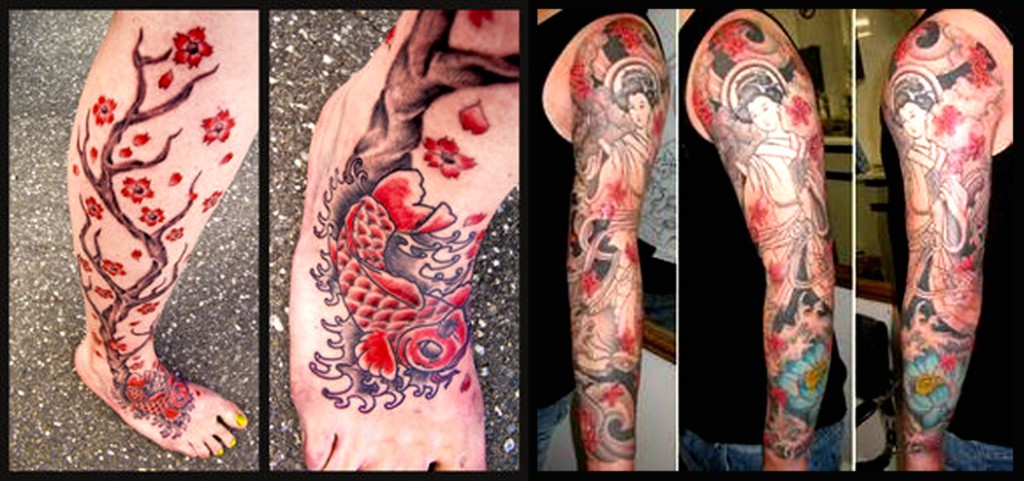 Cherry blossoms are a prevalent symbol in Irezumi, the traditional art of Japanese tattoos. In tattoo art, cherry blossoms are often combined with other classic Japanese symbols like koi fish, dragons or tigers.[20]
Cherry blossoms are a prevalent symbol in Irezumi, the traditional art of Japanese tattoos. In tattoo art, cherry blossoms are often combined with other classic Japanese symbols like koi fish, dragons or tigers.[20]
Varieties and blooming
The following species, hybrids, and varieties are used for sakura:[21][22][23][24][25]
- Prunus apetala var. pilosa
- Prunus campanulata
- Prunus ×furuseana
- Prunus incisa var. incisa
- Prunus incisa var. kinkiensis
- Prunus ×introrsa
- Prunus ×kanzakura
- Prunus ×miyoshii
- Prunus ×parvifolia
- Prunus pendula
- Prunus ×sacra
- Prunus sargentii
- Prunus serrulata
- Prunus ×sieboldii
- Prunus ×subhirtella
- Prunus ×syodoi
- Prunus ×tajimensis
- Prunus ×takenakae
- Prunus verecunda
- Prunus ×yedoensis
White Cherry Blossoms (Sakura)
Japan has a wide variety of cherry blossoms (sakura); well over 200 cultivars can be found there.[26] The most popular variety of cherry blossom in Japan is the Somei Yoshino. Its flowers are nearly pure white, tinged with the palest pink, especially near the stem. They bloom and usually fall within a week, before the leaves come out. Therefore, the trees look nearly white from top to bottom. The variety takes its name from the village of Somei (now part of Toshima in Tokyo). It was developed in the mid- to late-19th century at the end of the Edo period and the beginning of the Meiji period. The Somei Yoshino is so widely associated with cherry blossoms that jidaigeki and other works of fiction often depict the variety in the Edo period or earlier; such depictions are anachronisms.
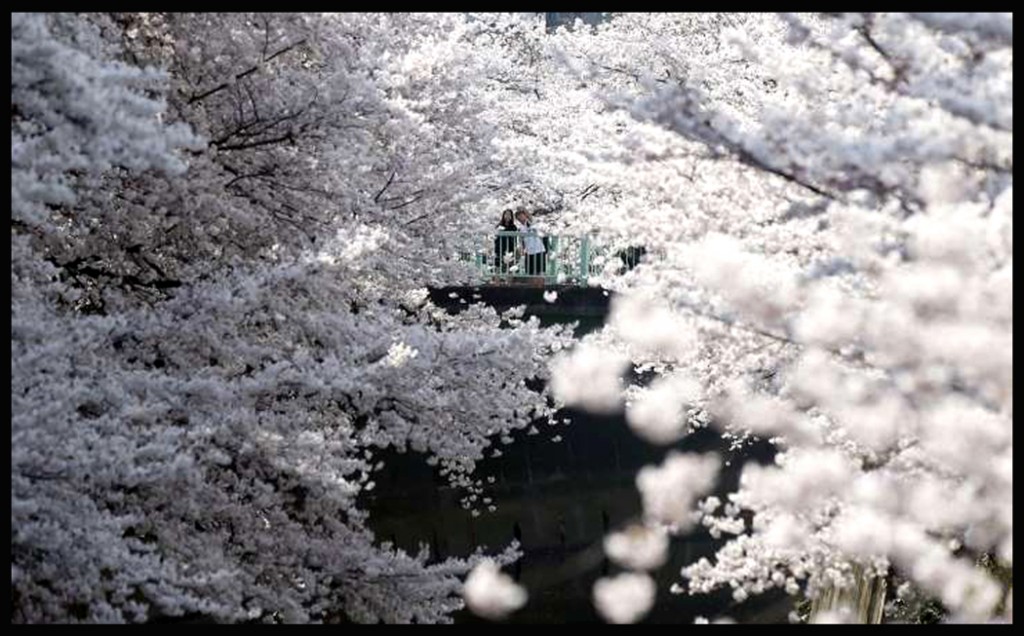 Winter sakura or fuyuzakura (Prunus subhirtella autumnalis) begins to bloom in the fall and continues blooming sporadically throughout the winter. It is said to be a cross between edohiganzakura, the Tokyo Higan cherry (P. incisa) and mamezakura (P. pendula).[27]
Winter sakura or fuyuzakura (Prunus subhirtella autumnalis) begins to bloom in the fall and continues blooming sporadically throughout the winter. It is said to be a cross between edohiganzakura, the Tokyo Higan cherry (P. incisa) and mamezakura (P. pendula).[27]
 Other categories include yamazakura, yaezakura, and shidarezakura. The yaezakura have large flowers, thick with rich pink petals. The shidarezakura, or weeping cherry, has branches that fall like those of a weeping willow, bearing cascades of pink flowers.
Other categories include yamazakura, yaezakura, and shidarezakura. The yaezakura have large flowers, thick with rich pink petals. The shidarezakura, or weeping cherry, has branches that fall like those of a weeping willow, bearing cascades of pink flowers.
Thanks to all the websites below that I visited and gathered information of beautiful cherry blossom festivals for this project. Please visit the following links for more information:
https://www.google.com/#q=cherry+blossoms+around+the+world
https://www.bbc.com/travel/story/20130318-cherry-blossoms-around-the-world
https://www.budgettravel.com/feature/our-10-favorite-cherry-blossom-festivals,7046/
https://www.boredpanda.com/most-beautiful-cherry-blossoms-around-the-world/
https://www.smithsonianmag.com/travel/where-see-best-cherry-blossoms-around-world-180949961/?no-ist
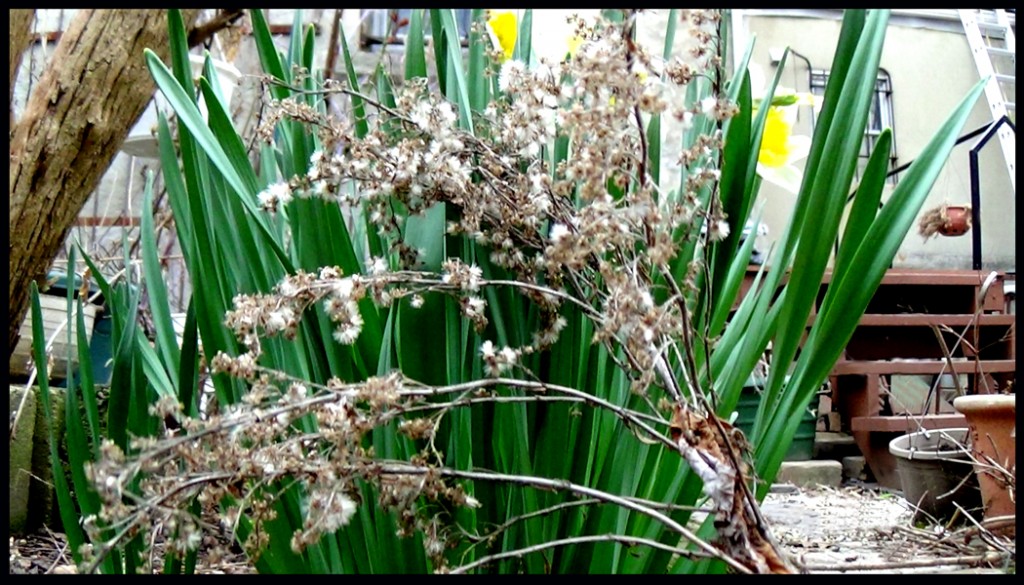

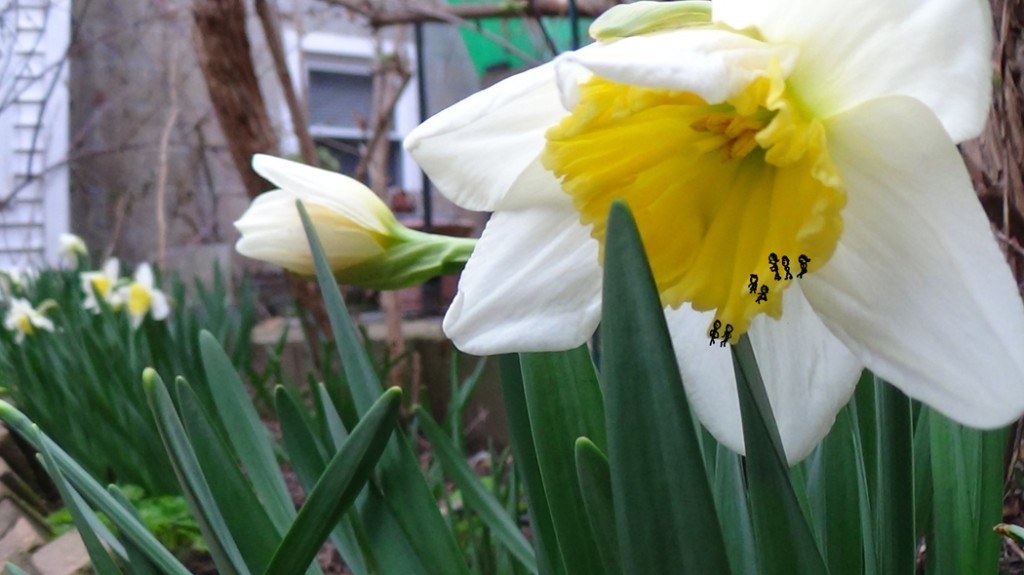
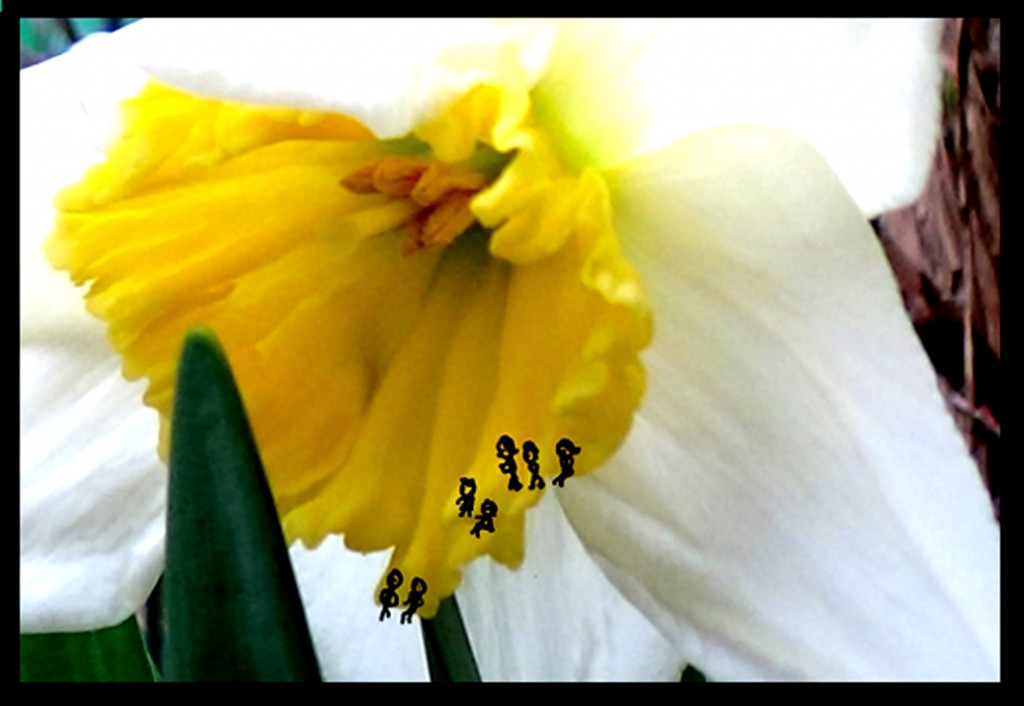
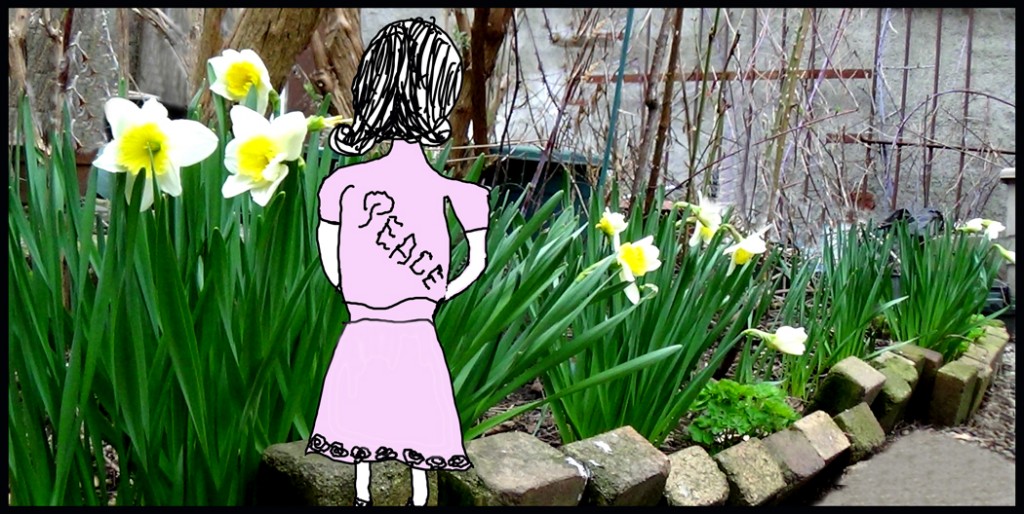
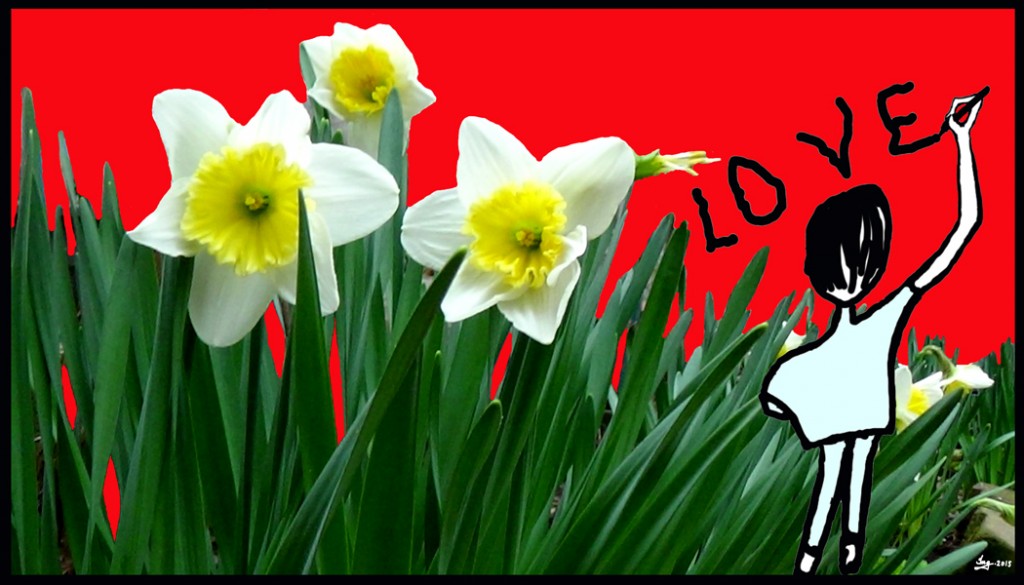
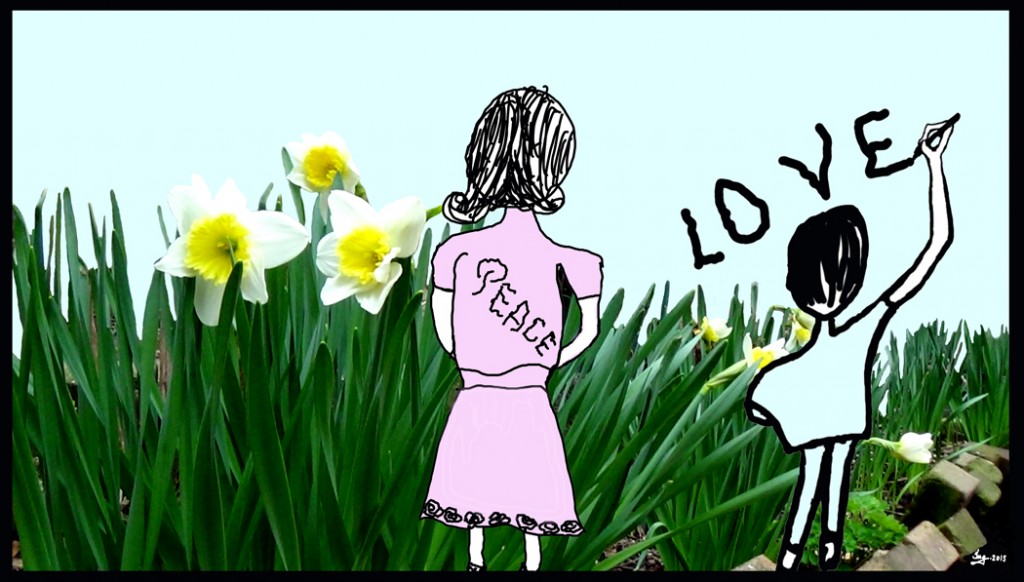
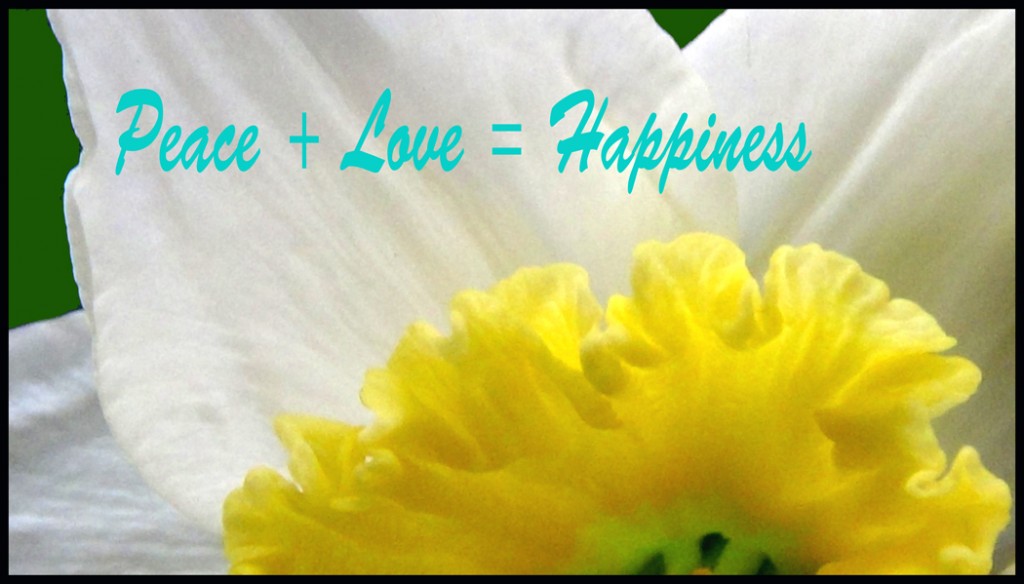

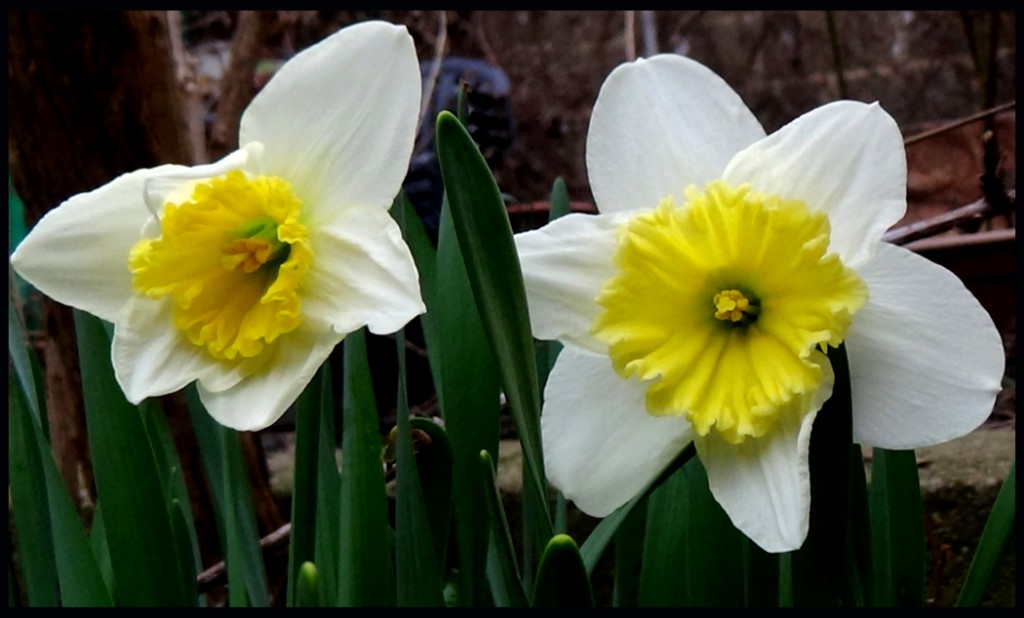


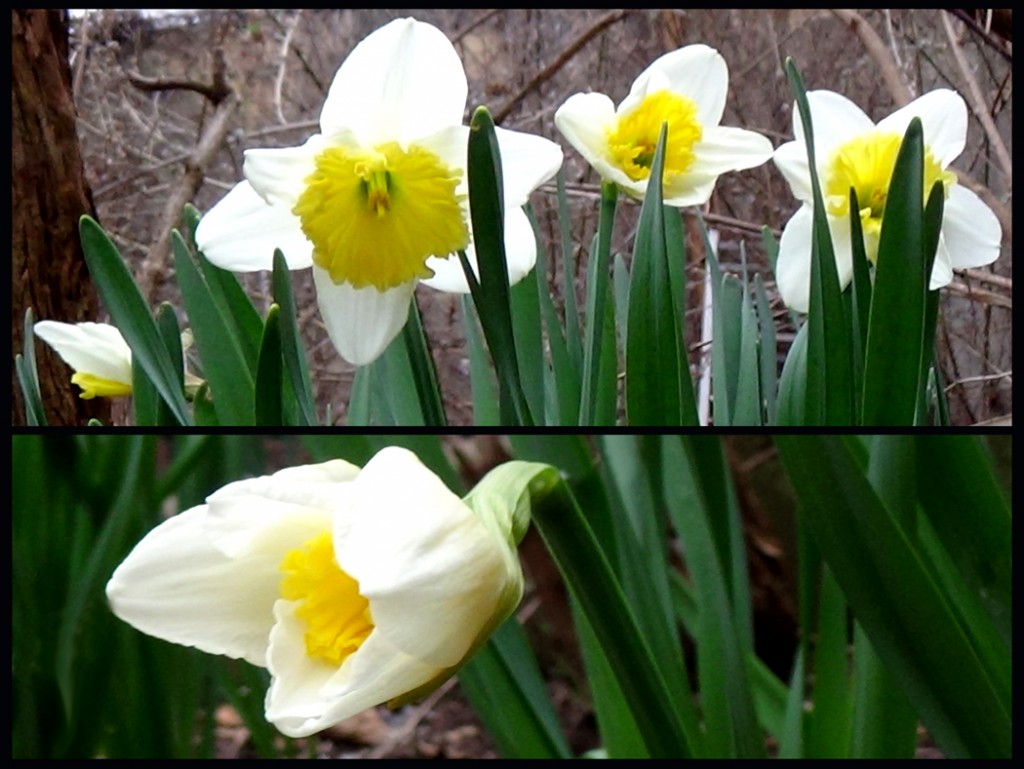
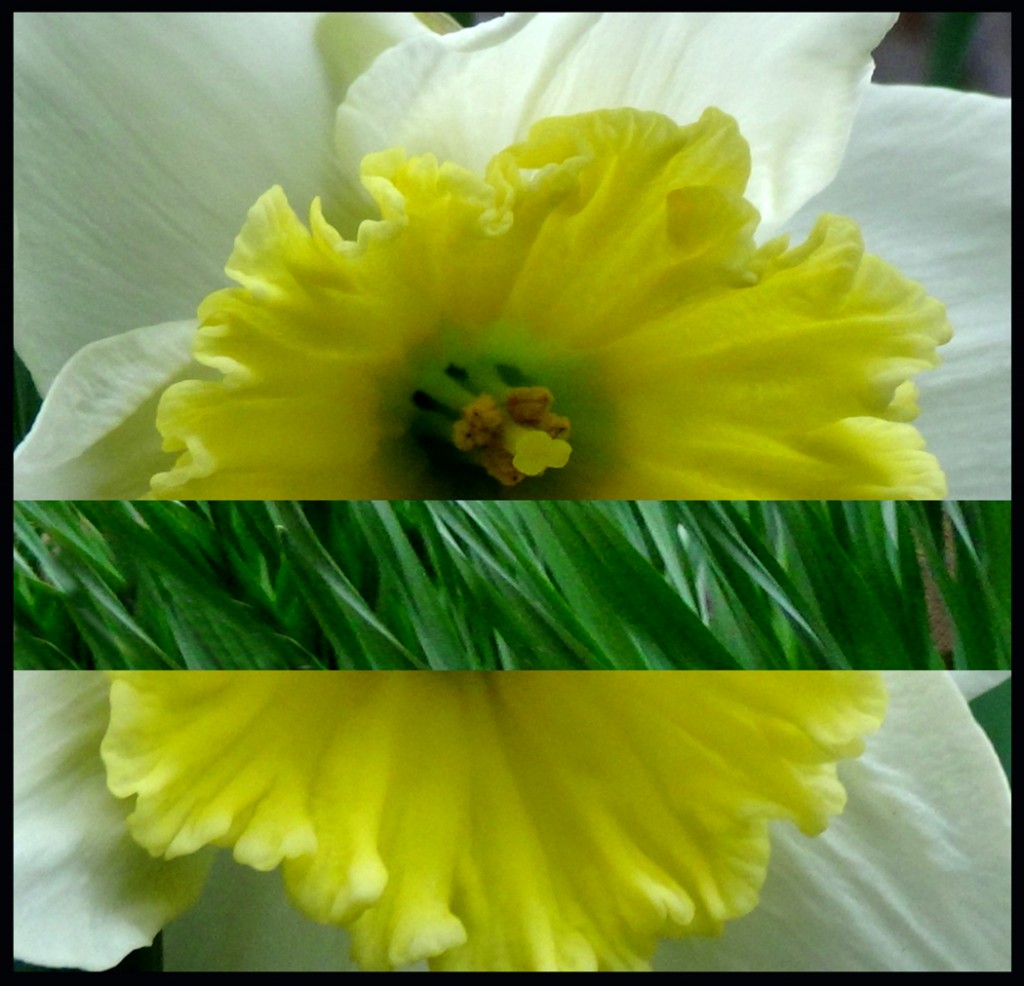

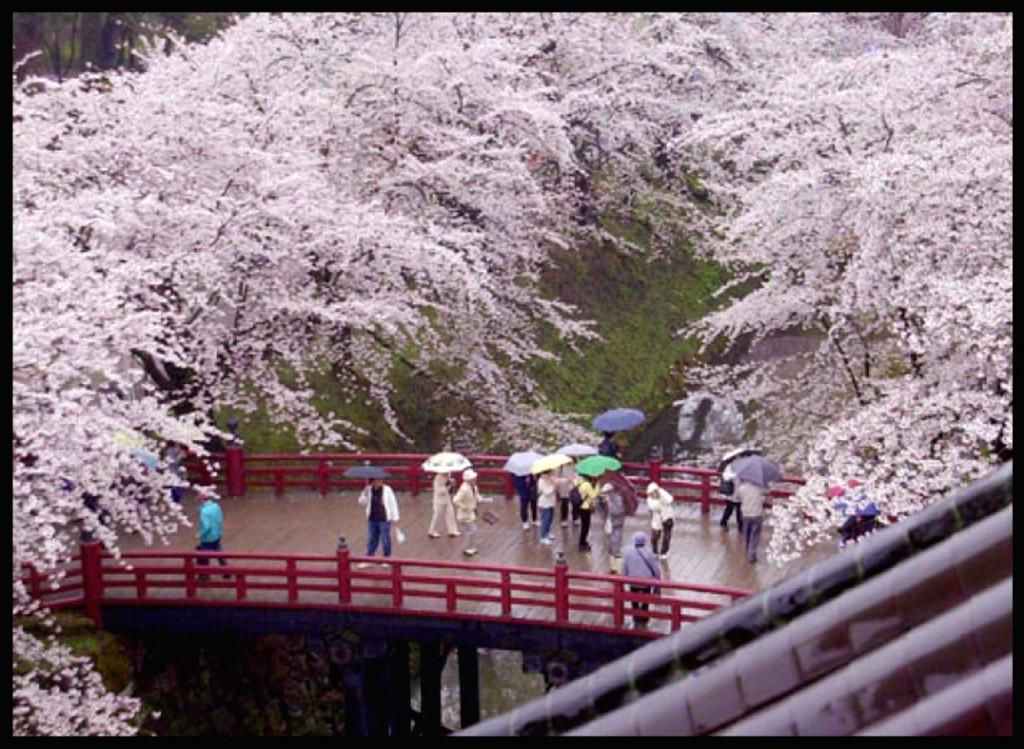

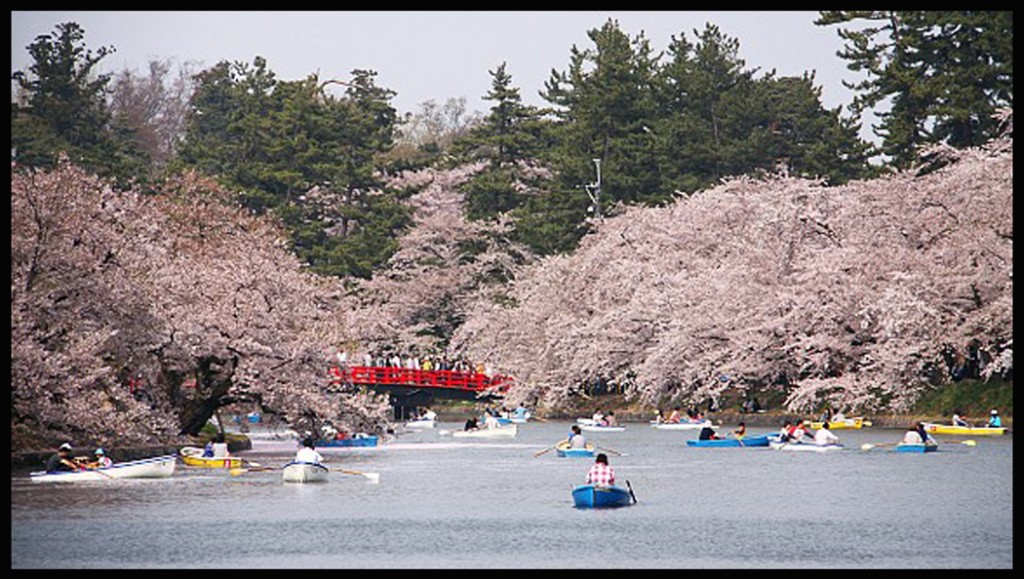
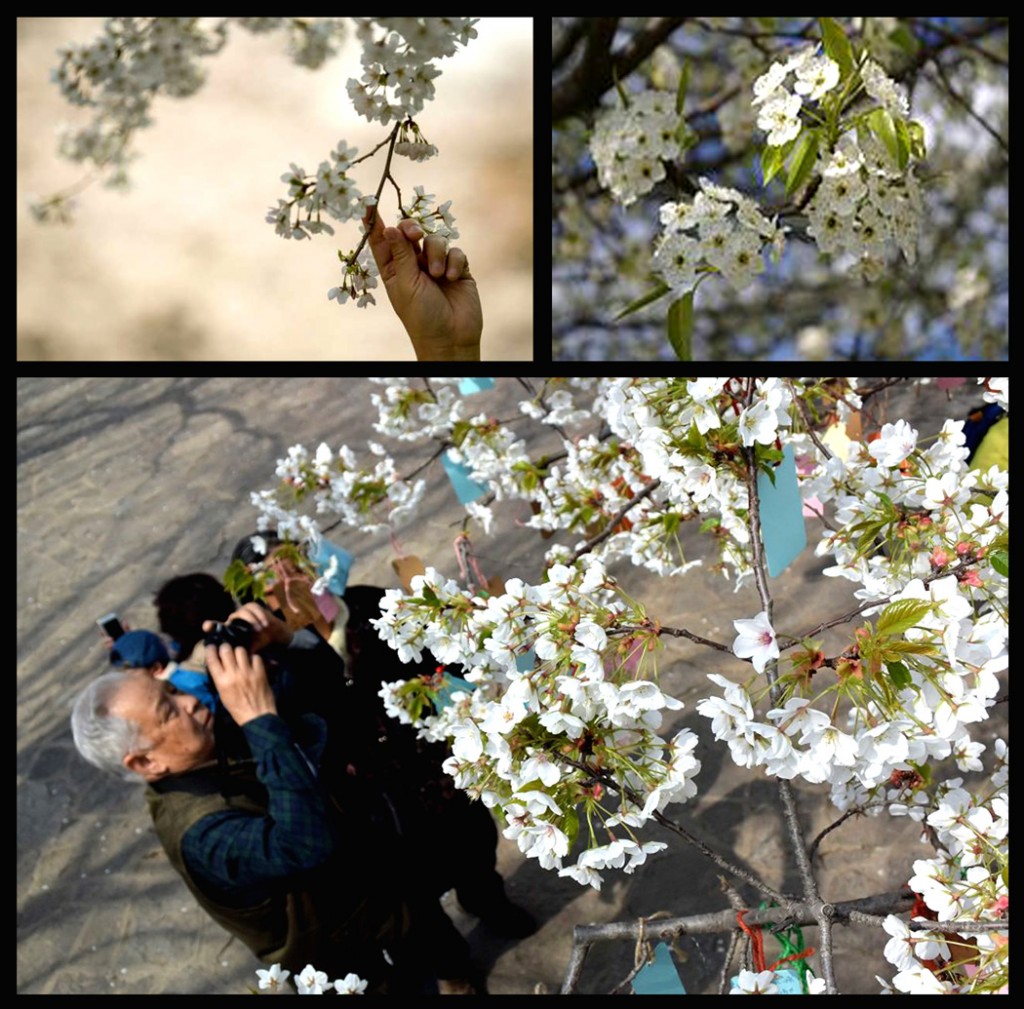
Leave a Reply